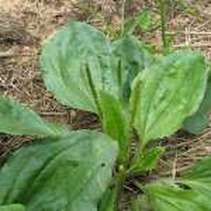 I love harvesting food from my garden, but I also love foraging for wild foods. There is an abundance of food growing all around us. Of course, there are berries that are easy to identify. There are wild strawberries, blueberries, raspberries, blackberries, black caps and more. What child doesn't love to eat berries right from the plant? But, there is so much more. We've already passed by the violets, which are rich in vitamin C, but other flowers are edible, too. Evening primroses are a bright yellow flower that are blooming right now and are delicious in salads. Day Lilies will be blooming soon and the buds are edible and versatile. They can be eaten raw in salads, battered or just sauteed. Pansies are yummy on a cracker spread with cream cheese or tossed in a fruit salad. Zucchini blossoms can be dipped in batter and fried or just put on top of pizza. Borage flowers taste a little like cucumbers, making them great in salads. Nasturtiums are one of my favorite flowers to eat. They taste a little peppery and add a nice spice to salads, and the green seeds can be used instead of capers. Of course there are dandelion greens everywhere. The blossoms can be dipped in batter also. I like to throw them into a pancake batter. Another favorite edible flower is the rose. These are also packed with vitamin C and have a sweet taste. Any of these sweeter tasting flowers can be put into an iced summer drink or frozen into homemade popscicles for a little pizzazz. There are marigolds, clover blossoms, chive blossoms, lavendar, and so many more. My kids loved the novelty of eating flowers, just be sure your children understand that they always need to check with you before eating foods growing in the woods or in your yard. There are lots of healing plants growing wild as well. The best thing I've ever found for bee stings is wild plantain. It grows everywhere. To soothe a sting and draw out the venom, pick a few leaves and chew them well. It will leave a dry taste in your mouth, but they really need to be chewed and mixed with your saliva. Place this paste directly on the sting. You may need to repeat it once or twice, but within a few minutes all the discomfort is gone. It's like a miracle. I've done this often with very sceptical people, and they are always amazed at the results. Plantain can also be used as a band-aid. It's well worth researching other wild remedies. They often work like a charm. To find out more: http://www.askaprepper.com/23-medicinal-plants-native-americans-used-daily-basis/ I love making drinks from nature, too. Have you ever tried pine needle tea? I think it's delicious. Sumac lemonade is very refreshing in the summertime. There's also lots of wild mint growing around and in the fall, you can find rosehips on the wild rose bushes. Harvest the large hips and dry them to keep over the winter or, if you get enough of them, they make a great jam. We've used wild grape leaves to make our own stuffed grape leaves, and they work well if you pick the young leaves. There are also lots of foods to throw into salads. There's dandelion leaves, sorrel, chickweed, lambs quarters and so much more. Always pick the young leaves. If you wait until they're full grown or gone to seed, they will taste a little bitter. There are many other foods that are edible but not very tasty, in my opinion. Native Americans used acorns for flour, ate cattails, milkweed, etc. I'm not fond of these foods, but give them a try if you're feeling brave. Just be sure you learn how to prepare them correctly. Some of them can be toxic or just nasty tasting if not cooked the right way. If you like these ideas, I encourage you to investigate more. I loved taking my children and grandchildren into the yard or out in the woods to look for food to bring home for our table. We've lost a lot of our survival skills because we haven't needed them. I always liked to think that if I was ever lost in the woods, I could manage for quite a while eating the foods around me.
0 Comments
Once again, there is so much to do when learning about rocks and minerals. It's one of my favorite topics. Even as a child, I loved rocks, and my mother collected rocks from all over the world. Whenever a friend was going to be traveling somewhere, Mom would ask them to bring back a rock for her, and it seemed as though everyone did. She numbered them and kept a list of where each one came from. Many of them migrated to her beautiful rock garden. When one of my sons became interested, I was thrilled to jump into the topic again. Now, when you visit my gardens, you'll find all kinds of treasures hidden around my yard as well. We collected gems and ordinary rocks. We found quartz and granite in our own backyard, took a trip to Thatcher Park and hunted for fossils, went to the Herkimer Diamond Mine, Howe Caverns and the lesser known Secret Caverns, my personal favorite with it's 100 foot underground waterfall. We also went to The Petrified Sea Gardens which is owned by the quarry and is (sadly) now closed. There we found fossils of algae that grew at the sea bottom. They look like fossilized flat roses. You can still find some of these spectacular 500-million-year-old fossil formations, called Stromatolites, at Lester Park in Saratoga Springs. We also took a trip to Shelburne Falls, Massachusets to visit the glacial potholes found there. These were formed when the glaciers melted creating whirlpools of rocks and gravel that dug round holes through the rocks. When we went there, you could still walk out onto the rocks and swim, but alas, like so many things, they stopped allowing that because of too many injuries. However, Shelburne Falls is a fascinating place to visit anyway with a glass blower, a flower bridge and a great sandwich shop right on the main drag. All of these places have great educational materials for you to browse. Then, don't forget about our own NYS Museum and they're amazing collection of rocks and minerals. We also have a local rock and mineral club that hosts a show at the museum every winter. They also hold their meetings there the first Thursday of each month during the school year. This club is geared more toward adults, but if you're interested in rocks, it's worth checking out. Here's another resource to find places to hunt for fossils: https://www.newyorkupstate.com/attractions/2015/09/fossil_digs_in_upstate_new_york_5_places_to_look.html In addition to potential field trips, which are numerous, there are simple experiments that can be done. Epsom Salt crystals are easy and inexpensive to grow. Epsom Salt Crystal Materials
What You Do:
Here's a site on how to make salt & vinegar crystals: https://layers-of-learning.com/salt-and-vinegar-crystals/ Of course, we made lots of rock candy, which are just sugar crystals, and what kid doesn't love sugar? You can flavor them, color them or just grow them plain. They are simple to make, but it's important to follow the directions. Basically, all you need to make rock candy is sugar and hot water. The color of your crystals will depend on the type of sugar you use (raw sugar is more golden and refined granulated sugar) and whether or not you add coloring. Any food-grade dye will work. Rock Candy Materials
Check out this site for how to grow alum crystals. And, if you love these experiments and want to do more, there are plenty of kits to buy with all of the materials you need. There are magic rock kits and kits that have you growing crystals on absorbant paper. These have been popular with my family especially during the winter holidays. The main thing is, be sure to have lots of fun while exploring the exciting world of rocks and minerals. By Dakota L. - Own work, CC BY-SA 3.0, https://commons.wikimedia.org/w/index.php?curid=18521528 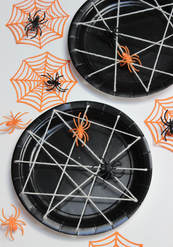 What child doesn't have some kind of fascination with bugs? They either love them, hate them or have an unreasonable fear of them. My daughter was always afraid of moths and butterflies and got traumatized by grasshoppers when she was about 5 or 6. The brother closest to her age was fascinated by all creepy crawly things. He once collected a whole goldfish bowl full of caterpillars to watch. He filled it with leaves and sticks but didn't realized when he put it in the sunniest window in the house that the glass would intensify the sunrays, cooking them to a crisp. That was a tough lesson, but a valuable one. When we lived in Stephentown on a dead-end dirt road in the woods, there were yellow and black garden spiders that showed up in the late summer/early fall and made webs all over our porch rails and the plants and bushes surrounding the front of the house. They were quite big and made beautiful webs. They eat the center of the web each night, recycling the chemicals and reweave it in the morning. They are fascinating to watch. My son and I would catch bugs to throw into the web and watch the spiders race over, paralyze the bug and wrap it tightly. There are always craft projects that reinforce each topic. Spiderwebs, can be made by punching holes along the edge of a paper plate and let your children weave across the plate in any direction they want. You can even carefully cut out the center after they're finished. 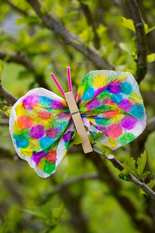 When I ran my summer camp program, we made our own spiderwebs, hatched butterflies, built an ant farm, hatched sea monkeys and triops and identified various bugs. Beautiful butterflies can be made out of white coffee filters and a wooden clothespin or pipe cleaner. Drip watery paint onto the filter so that it spreads throughout the absorbant paper. Once it dries, pinch it together in the middle and attach the clothespin or pipe cleaner to the pinched middle. You can add googly eyes and antennae, if you want, and can paint the clothespin. There are butterfly hatching kits available to buy at a science store or online. Farnsworth Middle School, in Guilderland, runs a butterfly garden that is open to the public during the summer. Hours are limited, so be sure to check the schedule before heading out. Ants can be made out of cardboard egg cartons. You can teach your children about the different sections of the ants' bodies, the head, thorax and abdomen. Use three sections, one for each body part. Paint them and add pipe cleaners for legs and antennae. How many legs do they have? They have three. Paint or glue on eyes. Ant farms can be purchased inexpensively and are fun to watch. They are such busy creatures. You can find them in the wild, too. Just lift up a large rock, a board or a log and watch them scurry. If you collect your own ants for your farm, be sure to take them from the same colony or they will fight to the death. You can see that I've barely scratched the surface. Worms are fun as well as beetles, lady bugs, and how about praying mantises? As always, use your imaginations, and also ask your children what they would like to learn about? They may surprise you. There are so many things to learn and places to visit with this topic. I love the Pine Bush Discovery Center with exhibits about Karner Blue Butterflies and more, the Emma Treadwell Thacher Nature Center at Thomsons Lake that houses a bee hive encased in glass where you can watch the bees doing their busy work, Five Rivers Environmental Education Center and on and on. This area is very rich in educational adventures. I encourage you to go out exploring but, speaking of bugs, be sure to protect yourselves against ticks! And remember that in the late summer and during the fall, yellow jackets and ground hornets are very active and just looking for something to sting. Common plantain, which grows everywhere, is wonderful for taking the venom out of bee stings. Chew a few leaves (they taste horrible, but the saliva activates the healing properties) and apply the paste. It's like magic! Also remember to teach your children that not all bugs are harmless. Some spiders and ants bite and can cause a harsh reaction. |
Archives
April 2019
Categories |

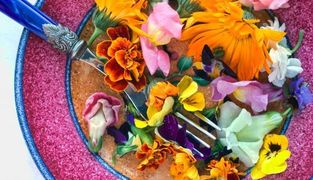
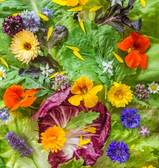
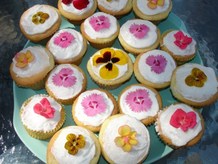
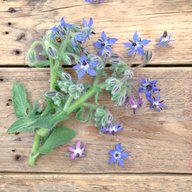
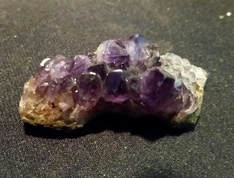
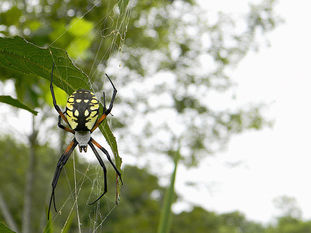
 RSS Feed
RSS Feed